Run into the woods! When I told Jonas, my four-year-old, we were going to a park he asked, “Are there slides?” We’ve taken many hiking trips in his lifetime, so I knew he wouldn’t be disappointed, but it’s common for children now to need entertainment planned. We met my two nieces, Grace and Melody, who frequent the park and, along with my daughter Finlea, set off onto the trails. We found an avenue of trees and I told them to, “Run! Run into the woods.” There were no plans, no expectations, no programs, no devices; just an invitation to run.
The Children of Indiana Nature Park was created as a Signature Project of Indiana’s Bicentennial Celebration. It’s located in Centerville, near Richmond on the east side of the state. The park is divided by county to allow children of Indiana to claim a ceremonial deed to the park. Counties that have higher populations are bigger in size. This gift of nature is given to the children in Indiana to create a sense of ownership of the land around them and bring awareness to conserving and protecting our earth. Outside of the park, I recently gave deeds to a group of children I work with and they couldn’t wait to grab their parents’ phones to see their land in the park. When presenting to the group we talked about being good stewards of the land around us as a tribute to the park. We headed outside for a quiet moment. They joyfully ran and we sat on blankets and were silent for five minutes listening to all the nature that surrounded us.
We started our visit at the Cope Environmental Center. This new facility houses a classroom, offices, critters to meet, bird watching and space for meetings and events. The building was constructed using rigorous guidelines for green building and is working toward participation in the Living Building Challenge. We were greeted by executive director Traci Lewis who introduced us to all of the animals and provided a tour of the beautiful building. My favorite was the usage of trees dying from emerald ash borers. They trees were repurposed by a local volunteer to be included in the design. The traces of the damage are visible, bringing context to this invasive species.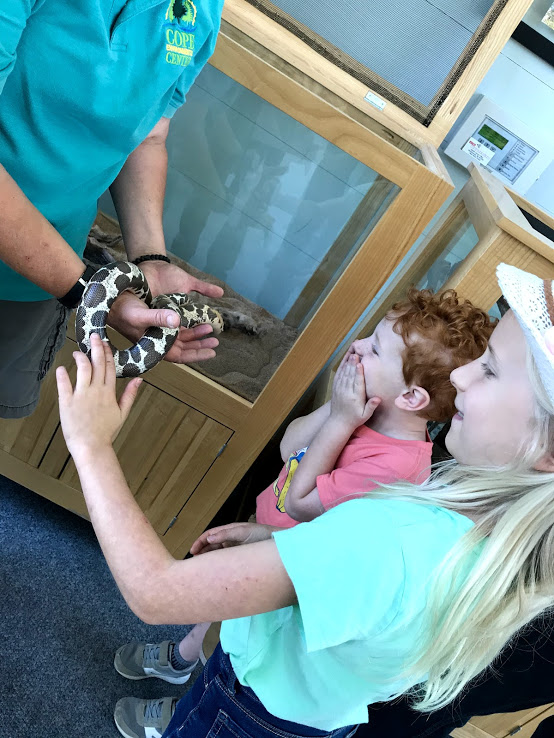
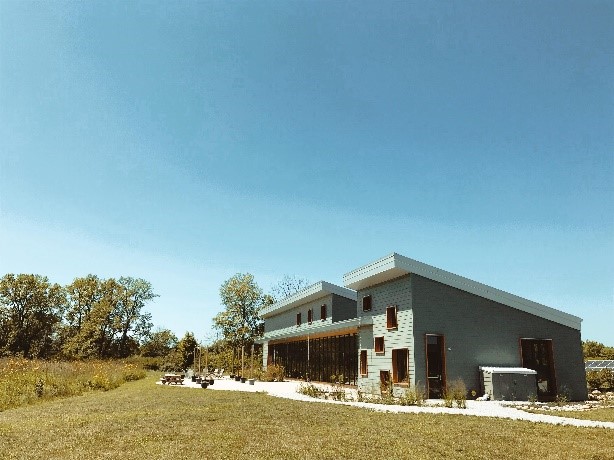

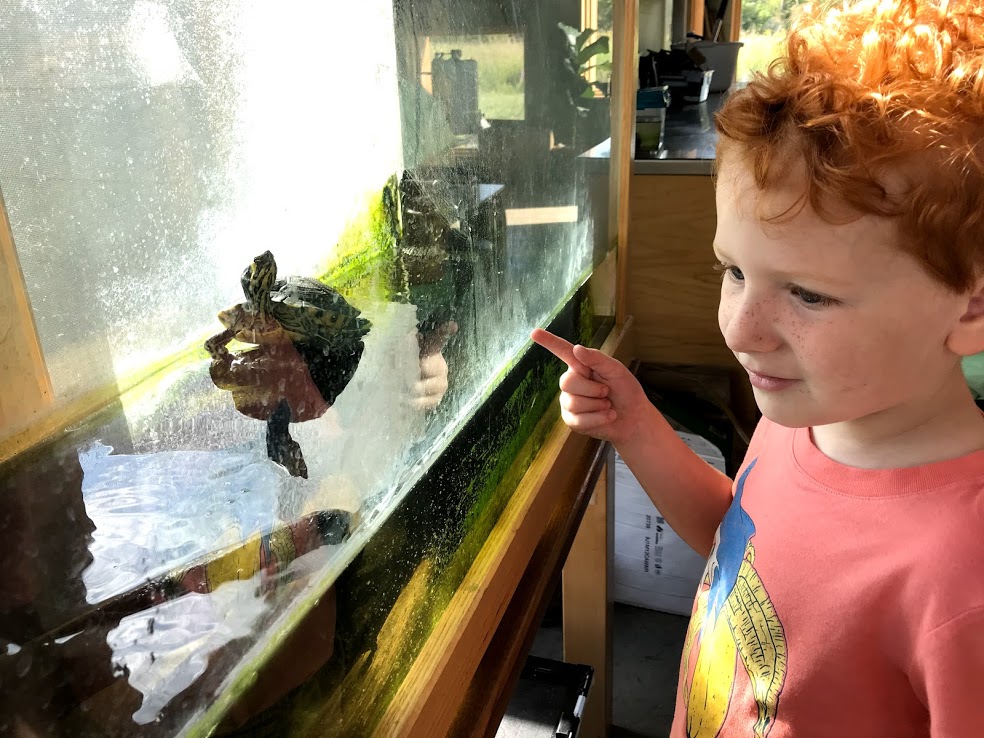
My niece borrowed one of the backpacks before heading to the park site. Traci met us and shared more information about the original center. We headed into the woods at the sign for the Children’s Park. The magic and wonder in a tree lined trail captured the hearts of Jonas, Grace and Melody. They ran and giggled up and down the trail. Jonas found a piece of trash when we visited the park. When he picked it up he naively whispered, “I think it was bad guys.” I wore my daughter, Finlea, and walked further into the trail. The stretches of wild flowers were teaming with butterflies and bees. Finlea’s curiosity at 16 months is heightened outside. The open-ended appeal and natural visual stimulation is perfect for her brain development. The map below shows the division of counties and trails. Future trails will be ADA accessible. A personal note: I did not bring my stroller, but a stroller would navigate most of the trails.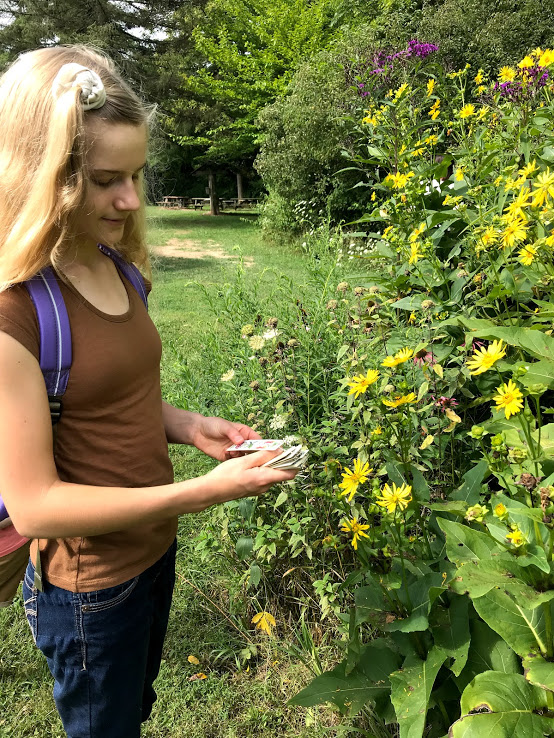
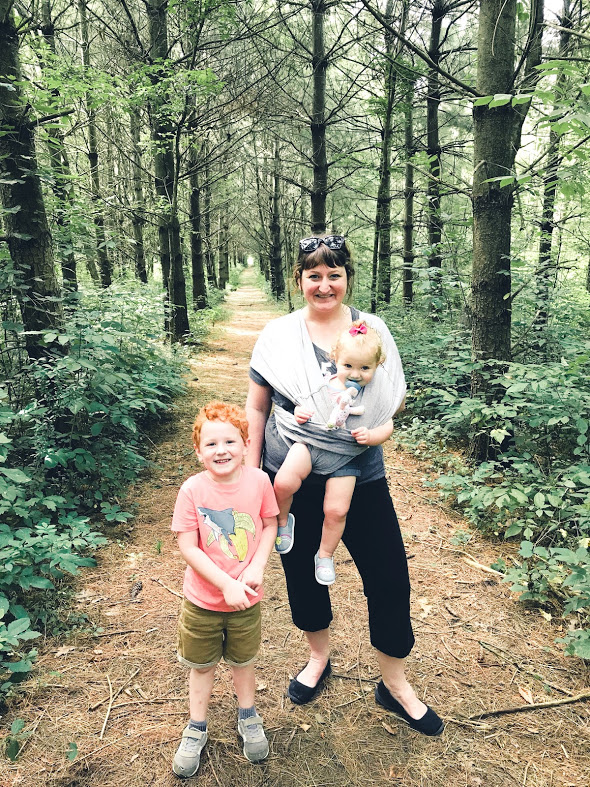

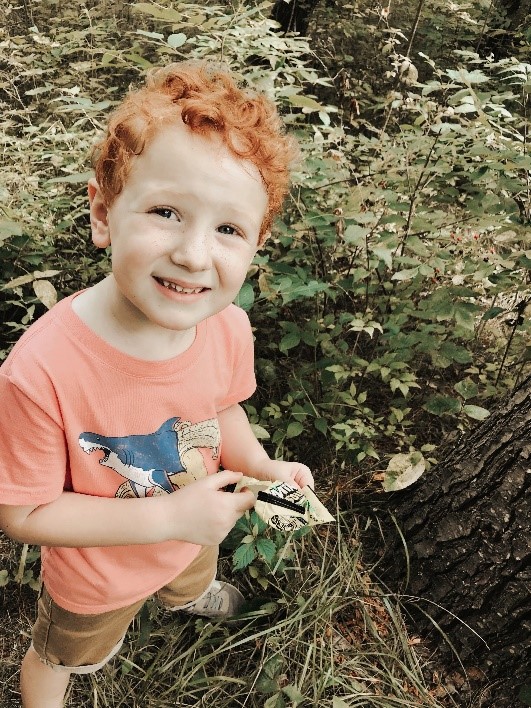
If you’ve been in the Indiana Young Readers Center lately, you may have noticed the varying window displays each month. August’s displays highlighted books by Indiana authors about parks, trees and animals native to Indiana. There is also information about Indiana’s State Parks and Indiana Children’s Outdoor Bill of Rights. I created our August storytime, themed “Trees,” to highlight the park and provide deeds to the oldest participants. The deeds provide a great conversation starter for taking care of the Earth and a reminder to spend time outside. If you’re interested in any of the books on display or from our storytime, a list is provided below.
If a park isn’t nearby, there are a multitude of resources for children and educators alike located on the park’s website. I used the information on the site through two sets of eyes: an educator and a parent. I looked first as an educator and was dazzled by all of the resources. I was pleased at the connections to Indiana standards readily listed. The different agencies providing these did a phenomenal job of creating engaging lessons. I was most surprised at not just the quality, but the quantity of resources. I cannot emphasize enough the thoughtfulness to connecting nature in the classroom to Indiana Academic Standards.
My children are not school-aged yet, so they loved looking at the Animals and Plants on My Land section of the website and using the zoom-in features on the coordinate map. It has a helpful, Find Nature Near You feature that connects you to resources for nearby parks. It also gives practical tips for exploring nature in your own backyard. “Last Child in the Woods” by Richard Louv, which explores the need for children to be outdoors, opens quoting a fourth-grader in San Diego, “I like to play indoors better ‘cause that’s where all the electrical outlets are.” This sentiment is echoed in my experience with children in the classroom. When brainstorming for a journal prompt about spring and summer only two out twenty-three children mentioned an outdoor activity. As a parent, I often feel defeated when the first words out of my son’s mouth are, “Can I have the iPad?” I often self-justify his love for the device because learning is his favorite thing, and he does chose to watch educational videos. This park visit reminded me of my need as a parent to weight outdoor play over indoor conveniences. I was raised to play outside for hours, but I lived in a rural area with a stay-at-home mom. The ideas on the website are realistic for any working family.
I personally believe in the dangers of nature deficiency in children, but it’s difficult as a working parent of young children to navigate screen time with outdoor play. The teacher webinar in the Educational Resources tab on the website is worth 1 PGP and provides compelling research on the topic. It mentions the Oxford Junior Dictionary eliminating “natural world” words in favor of “digital” words. It cites a 2010 study by Solutions Journal referencing children’s abilities to “recognize over 1,000 corporate logos, but few can identify more than a handful of local plants and animals.” The message provided by both the park and website is loud and clear, “Get out! Get outside!” We finished our visit to the park, just my children and I, under the shade of a tree. We sprawled out and watched the butterflies dance in a patch of wildflowers. We listened, as any avid birder would, for the calls of birds we recognize. My children had no plans, no expectation, no programs, no devices, and no slide; we found ourselves delightfully free.
Nature books from the Indiana State Library:
By April Pulley Sayre: “Trout, Trout, Trout,” “Squirrels, Leap,” “Trout Are Made of Trees,” “Bird, Bird, Bird,” “Woodpecker Wham!”
By Lola Shaefer: “Because of an Acorn,” “Lifetime”
By Helen Frost: “Step Gently Out”
By Christie Matheson: “Tap The Magic Tree,” a 2015 Firefly Award nominee.
The post was written by Indiana Young Readers Center Program Coordinator Tara Stewart.


Thank you for the post! Word needs to be spread about this wonderful opportunity for all the kids of Indiana. We plan to visit my little one’s piece of the park soon!!